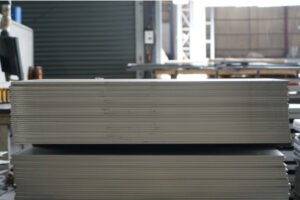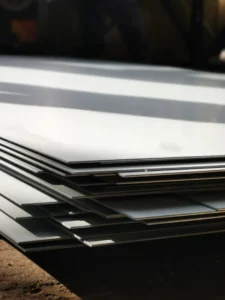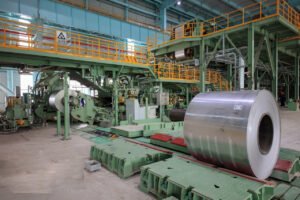EXW vs FOB: Choosing the Best Incoterm for Stainless Steel Sheet Imports
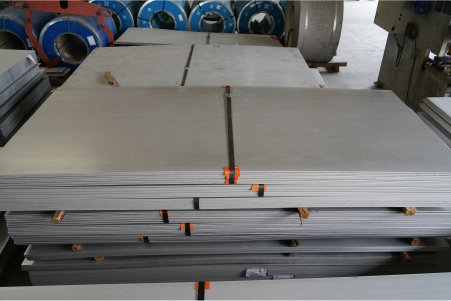
Are you struggling to decide between EXW and FOB terms1 for your stainless steel sheet imports? The complexity of Incoterms can be daunting, and making the wrong choice can lead to unexpected costs and shipment delays, jeopardizing your entire production line. Understanding these terms is the key to mastering your supply chain.
Choosing between EXW (Ex Works) and FOB (Free On Board) for stainless steel sheets depends on your desired level of control, risk tolerance, and logistical capabilities. EXW offers lower unit prices but places all responsibility on you, the buyer, while FOB includes local handling and export clearance by the seller.
This isn't just a choice between two acronyms on a contract; it's a strategic decision that defines your role, responsibilities, and risks in the international trade process. In my years as Global Business Director at MFY, I've guided countless clients through this decision, helping them move beyond price-per-ton and build a supply chain that is both cost-effective and resilient.
The debate isn't as simple as cost versus control. It's a nuanced calculation involving hidden fees and logistical capabilities2 in a foreign country, and the reliability of your supplier. A seemingly cheaper EXW price can quickly become a logistical nightmare if you don't have the resources on the ground in China. Conversely, a well-managed FOB agreement with a trusted partner like MFY streamlines the process, freeing you to focus on your core business. This article will delve into the practical realities I've seen firsthand, helping you make a truly informed decision.
What is the background of EXW and FOB incoterms in the global trade of stainless steel sheets?
Navigating global trade can feel like deciphering an ancient language, with terms like EXW and FOB feeling archaic. Ignoring their historical context can lead to costly misunderstandings of your responsibilities. Understanding their evolution is crucial for applying them correctly in today's stainless steel market.
EXW (Ex Works) and FOB (Free On Board) are standardized trade terms established by the International Chamber of Commerce. EXW represents the minimum obligation for the seller, while FOB, rooted in maritime history, requires the seller to deliver and load goods onto the buyer's designated vessel.
These terms are far more than historical footnotes; they are the living grammar of international commerce, shaping every stainless steel transaction across the globe. Their origins are deeply entwined with the history of shipping itself. Initially conceived for a world of break-bulk cargo and sailing ships, FOB was a straightforward concept: the seller’s duty ended when goods passed the ship's rail. As trade evolved with the advent of containerization and integrated logistics, the need for a term that gave buyers more control over the entire shipping process grew, leading to the prominence of EXW. In the stainless steel industry, this evolution is particularly relevant. The sheer weight and specific handling requirements of steel coils and sheets mean that the transfer of responsibility is a critical, high-stakes event. Understanding how these legacy terms have been adapted for modern, high-volume steel trading is the first step toward leveraging them for your own competitive advantage. It’s a story of evolving risk, control, and the relentless pursuit of efficiency in a globalized world, a story we at MFY have navigated alongside our partners for years.

The Maritime Origins of Free On Board (FOB)
The concept of "Free On Board" is as old as international maritime trade itself. Before the International Chamber of Commerce (ICC) standardized Incoterms in 1936, traders used their own contractual phrases, which often led to disputes. FOB emerged as one of the earliest and most intuitive solutions. Its core principle was simple: the seller was responsible for the cost and risk of getting the goods physically onto the ship nominated by the buyer. In the age of sail and steam, this meant covering all labor and equipment costs for loading, a significant and often unpredictable expense. The ship's rail became the literal and legal dividing line where risk was transferred. This clarity was revolutionary and became the bedrock of commodity trading for centuries.
For the stainless steel industry, which relies heavily on sea freight for global distribution, FOB was a natural fit. Mills and large trading houses, typically located in or near port cities, could easily manage the logistics of moving heavy steel products from their facilities to the quay and onto the vessel. This allowed buyers to focus on what they did best: managing the ocean voyage and import process in their home country. The term was built for a world where producers controlled the export-side logistics, a model that still dominates much of the industry today.
Over the decades, as the ICC has updated Incoterms to reflect changes in global logistics—most notably the rise of containerization—the definition of FOB has been refined, but its fundamental spirit remains. It represents a clear and practical division of labor and risk at the port of origin. It allows a supplier like MFY to leverage our deep-rooted local logistics networks in China to ensure our client’s stainless steel sheets are handled correctly and loaded safely, fulfilling our responsibilities up to that critical point of transfer.
The Rise of Ex Works (EXW) in a Buyer-Centric World
While FOB was born from the seller's world, Ex Works (EXW) is a product of the buyer's empowerment. As multinational corporations and large-scale importers developed their own sophisticated, global logistics departments, they sought greater control and cost consolidation over their entire supply chain. They no longer wanted to pay a supplier’s potentially marked-up local transport and handling fees; they wanted to manage it themselves. EXW was the answer. It represents the absolute minimum obligation for the seller, who merely needs to make the goods available at their own premises—be it a factory, warehouse, or mill.
This shift gave rise to a new type of buyer: one with the scale and expertise to negotiate directly with global freight forwarders, consolidating shipments from various suppliers and optimizing their entire logistics spend. For instance, a large engineering contractor importing various materials for a project in the Middle East might use EXW to consolidate stainless steel from MFY with components from other Chinese suppliers into a single, optimized shipment, managed by their own logistics partner. This gives them unparalleled visibility and control, turning logistics from a cost center into a strategic advantage.
However, this control comes with a heavy burden of responsibility. Under EXW, the buyer is responsible for everything that happens after the goods are picked up, including the critical and often complex process of export customs clearance in the seller's country. This was a radical departure from FOB and assumes a level of local knowledge and presence on the part of the buyer. The rise of EXW mirrors the globalization of business itself, where large players can operate seamlessly across borders.
Standardization and Adoption in the Stainless Steel Sector
The stainless steel industry has adopted both terms, and their use often reflects the nature of the players involved. Traditional, large-scale steel mills have historically favored FOB. They have established, efficient processes for moving products to the port and handling export formalities. It is part of their value proposition. For a mill, managing this process is a routine operation; for an overseas buyer, it can be a significant headache. Therefore, FOB remains the most common Incoterm for direct mill purchases.
On the other hand, the rise of specialized traders and distributors, as well as technologically-savvy buyers, has made EXW more prevalent. A trader might purchase EXW from multiple smaller mills, consolidate the material in their own warehouse, and then sell it on FOB or CIF (Cost, Insurance, and Freight) terms. This allows them to add value through logistics and consolidation. Similarly, a large-volume manufacturing company in India might establish a relationship with a logistics provider in China to handle all their EXW purchases, believing it gives them a better handle on total landed costs.
At MFY, we operate in this dual environment. Our integrated model, which combines production, trading, and logistics, allows us to offer the flexibility our clients need. We can provide competitive FOB terms by leveraging our scale and expertise, or we can facilitate EXW purchases for those clients, like large construction contractors, who have the infrastructure to manage it. The choice ultimately depends on the client’s own strategy, a topic we will explore next.
| Feature | Pre-Standardization Era | Early Incoterms (e.g., FOB) | Modern Incoterms (EXW & FOB) |
|---|---|---|---|
| Responsibility | Vague, based on individual contracts | Clearly defined at the ship's rail for FOB | Seller minimum for EXW; Seller loads for FOB |
| Risk Transfer | Source of frequent disputes | Occurs when goods cross the ship's rail | EXW: at seller's premises; FOB: once on board |
| Primary User | All traders | Commodity exporters and importers | FOB: Sellers/Mills; EXW: Buyers with logistics teams |
| Cost Structure | Often bundled and opaque | Seller pays for costs to get goods "on board" | EXW: Buyer pays all costs; FOB: Seller pays for export |
FOB transfers risk at ship's railTrue
Under FOB terms, the seller's responsibility ends when goods pass the ship's rail, marking the point of risk transfer to the buyer.
EXW includes export clearanceFalse
EXW places export clearance responsibility on the buyer, contrary to FOB where the seller handles export formalities.
How do EXW and FOB incoterms impact the current stainless steel sheet import process?
You see EXW or FOB on a price quote, but do you understand the profound impact on your import journey? This isn't just about the final price. A misunderstanding can lead to surprise fees, customs headaches, and critical delays that ripple through your operations.
EXW impacts your process by making you responsible for the entire journey, including trucking and export customs in China. FOB streamlines this by having the seller manage these steps, with the handover of cost and risk occurring only after the goods are loaded onto the vessel.
The choice of Incoterm fundamentally alters the architecture of your import transaction. It’s not a simple line item; it dictates a sequence of physical and financial responsibilities from the moment the stainless steel sheets leave the factory floor to the moment they are on a vessel bound for your country. It determines who orchestrates the local logistics, who prepares and files critical export documentation, and crucially, who bears the financial risk if something goes wrong during these early stages. I recall a new client, an equipment integrator in Southeast Asia, who was initially attracted by a low EXW price from another supplier. They didn't realize this meant they were responsible for arranging China's export clearance. The shipment was stuck at the port for three weeks due to documentation errors, a costly lesson in how the Incoterm defines the entire process. This is why a deep, practical understanding of the impact is not just academic—it's essential for smooth and predictable operations.
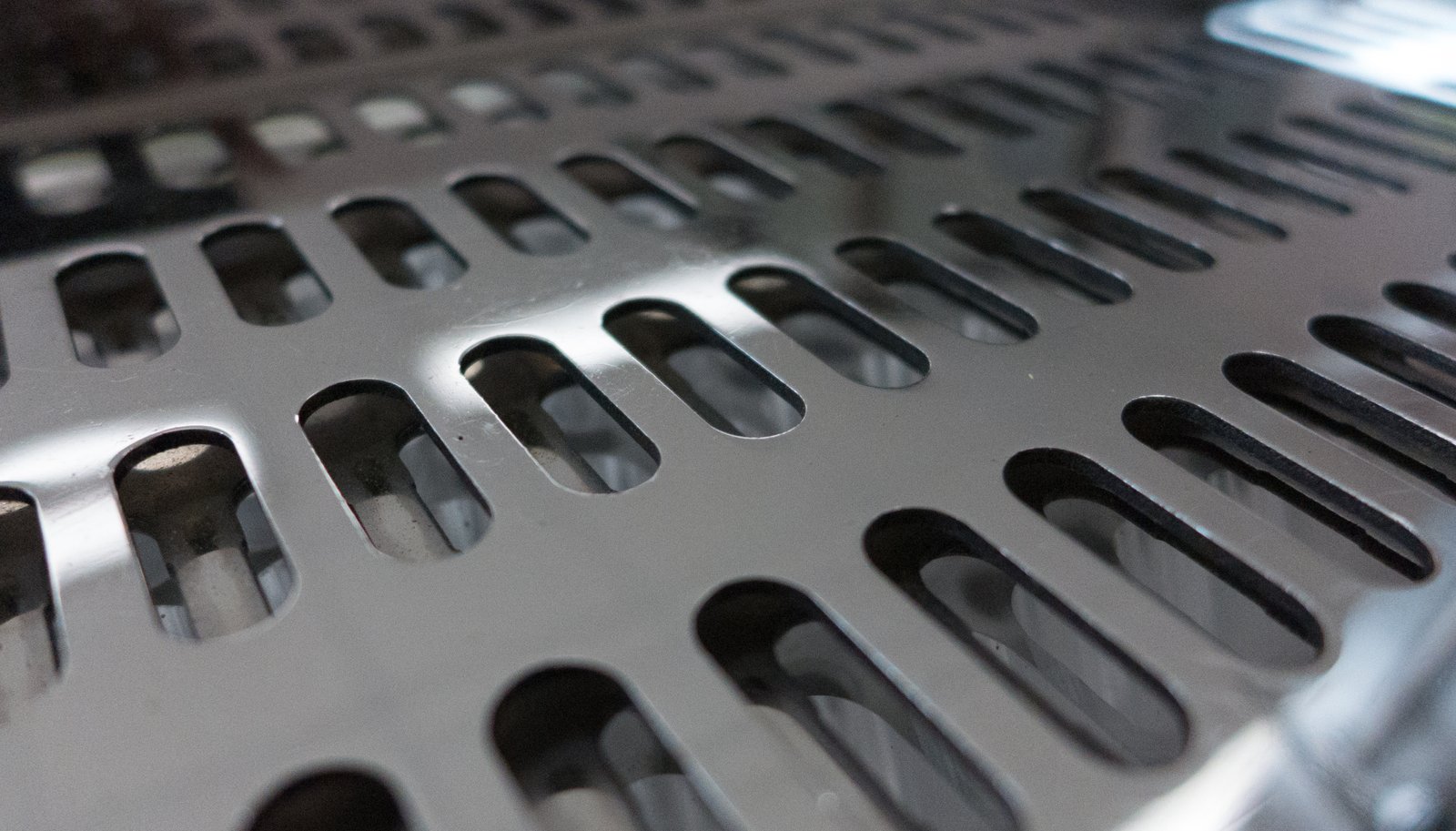
Mapping the Logistical Responsibility Chain
The most tangible impact of choosing between EXW and FOB is on the chain of logistical responsibility. Let's trace the journey of a shipment of stainless steel sheets from a mill in Foshan, China, to the Port of Nansha or Shenzhen. Under an EXW agreement, the buyer's responsibility begins at our factory gate. This means you or your designated agent must arrange for a truck to pick up the cargo, a task that involves navigating local transport regulations, language barriers, and scheduling. You are then responsible for the safe transport of those goods to the port, covering all costs and bearing all risks of transit. Once at the port, your responsibility continues through the complex process of clearing the goods for export through Chinese customs—a significant hurdle for any foreign entity.
In stark contrast, a FOB agreement places all of these initial responsibilities squarely on our shoulders at MFY. We manage the inland transportation from our facility to the designated port. We handle the port entry procedures and pay for all the terminal handling charges (THC) at the port of loading. Most importantly, we act as the exporter of record, using our extensive experience to manage all Chinese customs documentation and clearance procedures smoothly and efficiently. Your responsibility and cost obligation only begin once the stainless steel sheets are safely loaded on board the vessel.
This distinction is not trivial. The process of getting heavy cargo like stainless steel from an inland factory to a container yard, and then through customs, is fraught with potential delays and costs. For a buyer without a physical presence or a highly reliable third-party logistics partner (3PL) in China, managing this remotely under EXW is a significant operational risk. FOB, in essence, allows you to outsource this entire pre-shipment process to a local expert: your supplier.
The Financial Implications and "Hidden Costs"
On paper, an EXW price for a ton of stainless steel will always be lower than an FOB price, and this is often what attracts inexperienced importers. However, the EXW price is not the "landed cost." To make a true comparison, an EXW buyer must add several other charges that are included in an FOB price. These include inland trucking costs3, which can vary significantly based on distance and fuel prices. For instance, moving a container from a manufacturing hub to the port can cost several hundred US dollars.
Furthermore, the buyer must account for export documentation fees and customs clearance charges. Perhaps the most significant "hidden cost" is the Terminal Handling Charge (THC) at the port of origin. These are fees levied by the port authorities for the loading and handling of containers, and they are a standard part of the FOB price. Under EXW, these charges are billed to the buyer's freight forwarder and ultimately passed on to the buyer. Often, a buyer comparing an EXW price to an FOB price forgets to factor in these substantial, unavoidable costs.
A reliable supplier like MFY provides a transparent FOB price that bundles all these origin services. While this price is higher, it is also fixed and predictable. With EXW, the buyer is exposed to volatility in local transport and service fees. For example, during peak season or holidays in China, trucking and port service rates can spike unexpectedly. A clear cost analysis, as shown in the table below, almost always reveals that the perceived savings of EXW are often much smaller than anticipated, and sometimes non-existent, once all costs are accounted for.
| Cost Component | EXW (Buyer's Responsibility) | FOB (Seller's Responsibility) |
|---|---|---|
| Inland Trucking (Factory to Port) | Paid by Buyer | Paid by Seller (Included in FOB price) |
| Export Customs Declaration Fee | Paid by Buyer | Paid by Seller (Included in FOB price) |
| Terminal Handling Charges (THC) | Paid by Buyer | Paid by Seller (Included in FOB price) |
| Port Entry / Gantry Fees | Paid by Buyer | Paid by Seller (Included in FOB price) |
| Risk of Damage During Loading | Paid by Buyer | Paid by Seller |
| Ocean Freight & Insurance | Paid by Buyer | Paid by Buyer |
Risk Transfer: A Critical Legal and Insurance Distinction
Beyond logistics and cost, the point of risk transfer is a critical legal distinction with significant insurance implications. Under EXW, the risk for the goods transfers to the buyer the moment the cargo is made available at the seller's premises. This means that if the truck you hired crashes on the way to the port, or if the container is damaged while being loaded at the port, it is entirely your loss. Your cargo insurance must therefore cover the entire journey from the factory floor onwards, including the high-risk phases of inland transport and port handling in a foreign country.
Under FOB, the risk transfer occurs at a much later stage: when the goods are loaded on board the vessel. The supplier (MFY) is fully responsible for the product's safety until it is secured on the ship. If our truck has an accident, or if the port operator damages the steel during loading, it is our responsibility to rectify the situation, either by replacing the material or compensating for the loss. This provides a significant layer of protection and peace of mind for the buyer.
I once worked with a construction contractor in India who insisted on EXW terms to use their preferred freight forwarder. A container of our high-grade stainless steel sheets was unfortunately damaged by a crane during the loading process at the terminal. Because the Incoterm was EXW, the point of risk had already transferred to them at our factory gate. They had to file a complex claim against the terminal operator through their forwarder, a process that took months to resolve. Had they chosen FOB, it would have been our responsibility to immediately address the issue, likely by dispatching a replacement shipment while we handled the claim ourselves. This real-world example starkly illustrates why the FOB risk-transfer point is so valuable for most importers.
FOB includes port handling chargesTrue
Under FOB terms, the seller covers all terminal handling charges (THC) at the port of loading, unlike EXW where the buyer must pay these separately.
EXW transfers risk at destination portFalse
Risk transfers to the buyer at the seller's factory gate under EXW, not at the destination port - one of its most significant disadvantages.
What are the key challenges businesses face when choosing between EXW and FOB incoterms?
Choosing an Incoterm feels like a simple cost decision, but it's a strategic choice laden with potential pitfalls. The real challenges—like navigating foreign customs, coordinating logistics remotely, and uncovering hidden fees—can quickly erode any perceived savings and create massive operational disruptions for your business.
The primary challenges include accurately calculating the total landed cost beyond the invoice price, managing the significant logistical and communication hurdles of EXW Incoterms in a foreign country, handling the complex and risky export compliance process, and misunderstanding the critical point of risk transfer for insurance purposes.
In my daily conversations with clients, from distributors in Russia to manufacturers in Southeast Asia, I’ve seen firsthand how these challenges manifest in the real world. The decision between EXW and FOB is often where theoretical knowledge of trade clashes with harsh operational realities. More often than not, the problems that arise are not about the quality of the stainless steel, but about a breakdown in the logistical chain caused by an inappropriate Incoterm choice. I remember a case with a new manufacturing client in Vietnam. They opted for EXW to get a rock-bottom unit price, assuming their freight forwarder would handle everything. However, their forwarder’s local agent in China was unresponsive, leading to a week-long delay just to get a truck to our factory. This single communication failure created a domino effect on their production schedule. These are the practical, on-the-ground challenges that go far beyond the textbook definitions and require careful, strategic consideration.
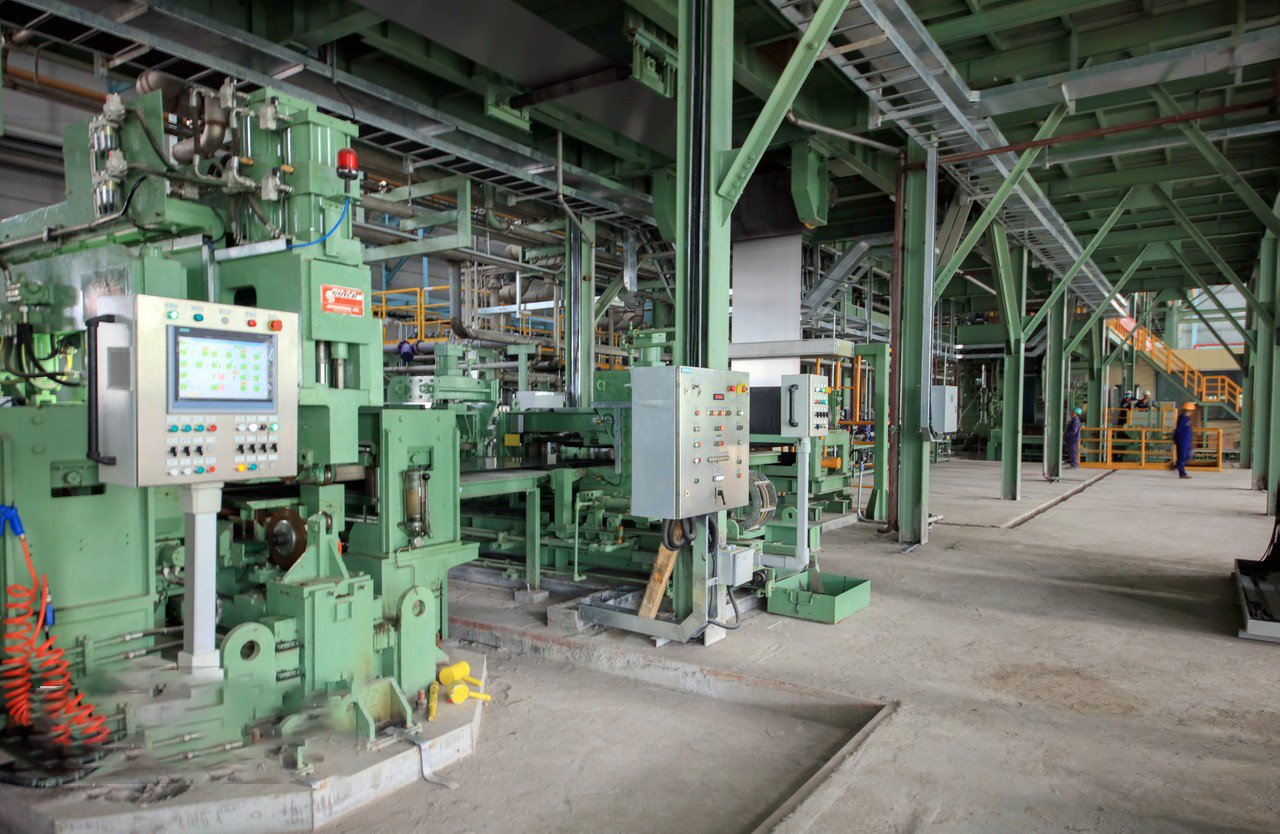
The Coordination Quagmire: Communication and Logistics in EXW
For an importer based thousands of miles away, the single greatest challenge of EXW is managing ground-level logistics and communication in China. When you choose EXW, you are effectively becoming a local logistics coordinator. This means finding and vetting a reliable local trucking company, communicating pickup schedules (often across significant time zone and language barriers), and ensuring they have the correct equipment to handle heavy stainless steel coils or sheets. A simple miscommunication—a wrong address, a missed pickup window—can lead to costly delays, storage fees, or even detention charges if trucks are left waiting.
I often share the story of a client, a construction materials trader in Dubai, who learned this lesson the hard way. They chose EXW to work with their global forwarding partner, but that partner's local presence in the region of our mill was weak. The client was sending emails from Dubai to their agent in Shanghai, who was then trying to coordinate with a local trucking company in a different province. The chain of communication was long and inefficient. The result was a two-day delay in pickup, which caused the shipment to miss its intended vessel. This created a ripple effect, delaying their project timeline and straining their relationship with their end customer.
This "coordination quagmire" is a direct consequence of the distance and lack of direct control inherent in EXW for most foreign buyers. An FOB agreement4 elegantly solves this. As the local supplier, we at MFY have established, long-term relationships with a network of trusted trucking companies. We speak the same language, operate in the same time zone, and understand the local nuances of port operations. The communication is direct and efficient, eliminating the layers of complexity that so often ensnare remote buyers.
The Illusion of Savings: Unmasking the True Total Cost
The most seductive trap of EXW is its lower initial price. However, this price is an illusion until a complete "total landed cost" analysis is performed. Businesses frequently underestimate the additional costs they will incur. As previously discussed, these include inland freight, terminal handling charges (THC), and export documentation fees. The challenge is that these costs are not always transparent or predictable. A freight forwarder might provide a quote, but it can be subject to surcharges and unforeseen fees.
For example, a port might unexpectedly impose a congestion surcharge, or a customs inspection might lead to additional handling and storage costs. Under EXW, all these variable, unpredictable costs are borne by the buyer. An FOB price, offered by a reputable supplier, internalizes these risks. We negotiate rates with our logistics partners based on high volume, allowing us to offer a stable and competitive all-in price for getting the goods onto the vessel. This transforms an unknown variable into a fixed, budgetable cost for the importer.
To illustrate, consider the following simplified cost analysis for a container of stainless steel sheets. The EXW price might be $2,000 less than the FOB price. However, once the buyer adds the average inland trucking ($400), THC ($250), export clearance ($150), and a buffer for potential unforeseen costs ($200), the "real" saving shrinks to just $1,000. For many businesses, giving up the security, convenience, and risk mitigation of FOB is simply not worth this diminished saving.
| Cost Analysis Scenario | EXW Cost Structure | FOB Cost Structure |
|---|---|---|
| Base Product Price | $50,000 | $52,000 (Includes origin services) |
| Inland Trucking | $400 | Included |
| Terminal Handling Charge (THC) | $250 | Included |
| Export Clearance Fee | $150 | Included |
| Potential Contingency Costs | $200 | Included (Absorbed by seller) |
| Effective "On Board" Cost | $51,000 | $52,000 |
| Net Difference | -$1,000 (but with higher risk/effort) | +$1,000 (for peace of mind & predictability) |
The Compliance Minefield: Navigating Foreign Export Regulations
Perhaps the most underestimated challenge for EXW buyers is the responsibility for export compliance. When you buy on EXW terms, you, the foreign company, are the "exporter" in the eyes of Chinese customs. This means you are legally responsible for ensuring the customs declaration is accurate, the commodity codes are correct, and all licensing requirements are met. An error in this process can have severe consequences, from fines and penalties to the seizure of your cargo.
Navigating a foreign country's customs regulations is a highly specialized task. It requires knowledge of local laws, licensing requirements for specific materials like certain grades of stainless steel, and the proper documentation procedures. While a good freight forwarder can handle the mechanics of this, the ultimate legal liability rests with the buyer. If the forwarder makes a mistake, it is your business that faces the repercussions.
This is a risk that, in my professional opinion, very few importers should be willing to take. At MFY, we handle thousands of export declarations a year. It is a core competency of our business. We are fully versed in Chinese export laws and maintain a dedicated team to manage the process. By choosing FOB, our clients transfer this entire compliance burden to us. They are not exposed to the risks of navigating a complex foreign bureaucracy. They can be confident that their shipment will be cleared correctly, legally, and efficiently, a benefit whose value far exceeds the marginal cost difference between EXW and FOB.
EXW requires buyer logistics coordinationTrue
Under EXW terms, the buyer must arrange all transportation from the seller's premises, creating complex coordination challenges.
FOB includes export complianceFalse
FOB terms transfer risk at the ship's rail but don't automatically include export compliance - this must be specifically negotiated.
What strategies can importers use to decide on the best incoterm for their stainless steel sheet imports?
Are you tired of guessing which Incoterm is right for you? Making a gut decision between EXW and FOB is a gamble your business can't afford. You need a clear, repeatable strategy to ensure you're making the most cost-effective and operationally sound choice for every shipment.
A robust strategy involves performing a detailed Total Cost of Ownership (TCO) analysis, not just a price comparison. You must also conduct a realistic self-assessment of your company's logistical capabilities and risk tolerance, and thoroughly vet your supplier's experience and transparency with FOB services.
The path from confusion to clarity lies in shifting your mindset from making a choice to building a strategy. At MFY, our goal isn't to push one Incoterm over another; it's to empower our clients to build the most resilient supply chain possible. This means helping you develop a framework for making the right decision time and time again. The best strategy isn't a universal rule but a customized approach based on your unique operational footprint, risk appetite, and the nature of your relationship with your supplier. It’s about asking the right questions—both of yourself and your partners. In this section, I’ll lay out the practical, actionable strategies that my most successful clients use. These are the steps that transform the Incoterm decision from a source of anxiety into a source of competitive advantage, ensuring your stainless steel supply chain is a well-oiled machine.

Strategy 1: The In-House Capability and Volume Assessment
The first and most critical strategy is to look inward. Before you even analyze a supplier's quote, you must perform a candid assessment of your own company's capabilities. The central question is: Do we have the resources, expertise, and scale to effectively manage logistics within China? Answering this requires breaking it down further. Ask yourself: Do we have an office or dedicated, trusted staff in China5? Do we have established relationships with reliable Chinese 3PLs or freight forwarders with strong on-the-ground operations? Are we importing high enough volumes—say, dozens or hundreds of containers per year—to justify the fixed costs and management overhead of coordinating EXW pickups?
A large-scale equipment manufacturer with a procurement office in Shanghai, for example, is in a strong position to leverage EXW. Their local team can vet trucking companies, coordinate schedules in the local language, and oversee the entire process. The volume they handle allows them to negotiate favorable rates with logistics partners, potentially creating genuine cost savings. In this scenario, EXW aligns with their operational strength.
Conversely, a medium-sized distributor in India purchasing five to ten containers annually has a very different profile. For them, the management time, communication challenges, and risks associated with EXW would far outweigh any potential savings. Their strength lies in distribution and sales in their home market, not in managing Chinese logistics. For this profile, FOB is the clear strategic choice. It allows them to leverage the supplier's expertise and focus on their own core competencies. This honest self-assessment is the foundation of a smart Incoterm strategy.
Strategy 2: Rigorous Vetting of Supplier FOB Services
If your self-assessment points toward FOB, the next strategy is to rigorously vet your supplier's capability to deliver it effectively. Not all FOB offerings are created equal. A less experienced supplier might treat FOB as simply a price list, adding a generous, opaque margin for services they don't efficiently manage. A world-class supplier like MFY, however, treats FOB as a core service, executed with transparency and professionalism.
When vetting a supplier's FOB service, ask specific, probing questions. Ask for a detailed breakdown of their FOB charges. While they may not reveal their exact margins, they should be able to clearly explain what is included (e.g., "Our FOB price includes inland trucking from our mill to the port, all standard terminal handling charges, and customs declaration fees."6). Ask about their experience: How many containers do they ship via FOB each month? Which shipping lines do they have relationships with? Can they provide references from other clients in your region who use their FOB service?
A key indicator of a reliable FOB supplier is their communication process. At MFY, we provide our FOB clients with proactive updates. You will be notified when your order is complete, when the truck has been dispatched, when it has arrived at the port, and when customs clearance is complete. This level of transparency builds trust and demonstrates true competence. A supplier who is vague about the process or their pricing is a red flag, suggesting their FOB service may be inefficient and overpriced.
Strategy 3: The Cost vs. Control Decision Matrix
The final strategy is to institutionalize the decision-making process using a simple matrix. This moves the choice from a "gut feeling" to a data-driven conclusion. The matrix forces you to weigh the competing priorities of cost, control, risk, and administrative burden. For each potential shipment or supplier relationship, you can plot your needs on this matrix to see which Incoterm is the logical fit.
| Decision Factor | Favors EXW | Favors FOB | Our Company's Profile |
|---|---|---|---|
| Logistical Control | We need full control over the entire chain | We prefer to delegate origin logistics | [e.g., Low - We have no staff in China] |
| Cost Management | We can secure lower costs via our own logistics contracts | We prioritize predictable, fixed costs | [e.g., High - Predictability is key] |
| Risk Tolerance | We accept origin country risks for greater control | We want to minimize risk until goods are on the vessel | [e.g., Low - We are risk-averse] |
| Administrative Capacity | We have the staff to manage foreign coordination | We have a lean team and need to minimize admin burden | [e.g., High - We are a lean team] |
By filling out the last column for your own company, the strategic choice becomes clear. If your answers lean consistently toward the right, FOB is your strategic Incoterm. If they lean to the left, EXW is a viable option to explore further. For the vast majority of small and medium-sized importers I work with, this exercise quickly reveals that the desire for control and small cost savings is outweighed by the need for risk mitigation and administrative simplicity, making FOB the superior strategic choice. This matrix provides a logical, defensible rationale for your decision that can be shared with stakeholders throughout your organization.
TCO analysis is crucial for Incoterm decisionsTrue
Total Cost of Ownership analysis considers all logistics costs, not just purchase price, making it essential for choosing the right Incoterm.
EXW always saves moneyFalse
EXW only saves money if you have sufficient volume and local logistics expertise - otherwise hidden costs often exceed FOB prices.
How do technological advances affect the decision between EXW and FOB incoterms for stainless steel sheets?
Does international trade still feel stuck in the past, running on paper and phone calls? You might be overlooking powerful digital tools that are revolutionizing logistics. These technologies are actively changing the risk-versus-control calculation, directly impacting your choice between EXW and FOB.
Technology is making EXW more accessible for importers by providing greater visibility and control through digital freight platforms. Simultaneously, it allows suppliers like MFY to enhance the transparency and value of their FOB services with real-time tracking and client portals, empowering buyers on all fronts.
As a company driven by innovation, we at MFY are constantly analyzing how technology reshapes our industry. The traditional barriers and information asymmetries that once made EXW a perilous choice for many are beginning to erode. Digital platforms now offer a degree of transparency and control over freight that was unimaginable just a decade ago. This can, for certain tech-savvy importers, make EXW a more calculated and manageable risk. However, this same technology also supercharges the value of FOB when leveraged by a forward-thinking supplier. It allows us to offer unprecedented visibility into the process we manage on your behalf, building a new level of trust and partnership. The impact of technology is not to make one Incoterm obsolete, but rather to sharpen the strategic considerations for both. It raises the bar for everyone, demanding greater efficiency and transparency across the entire supply chain.
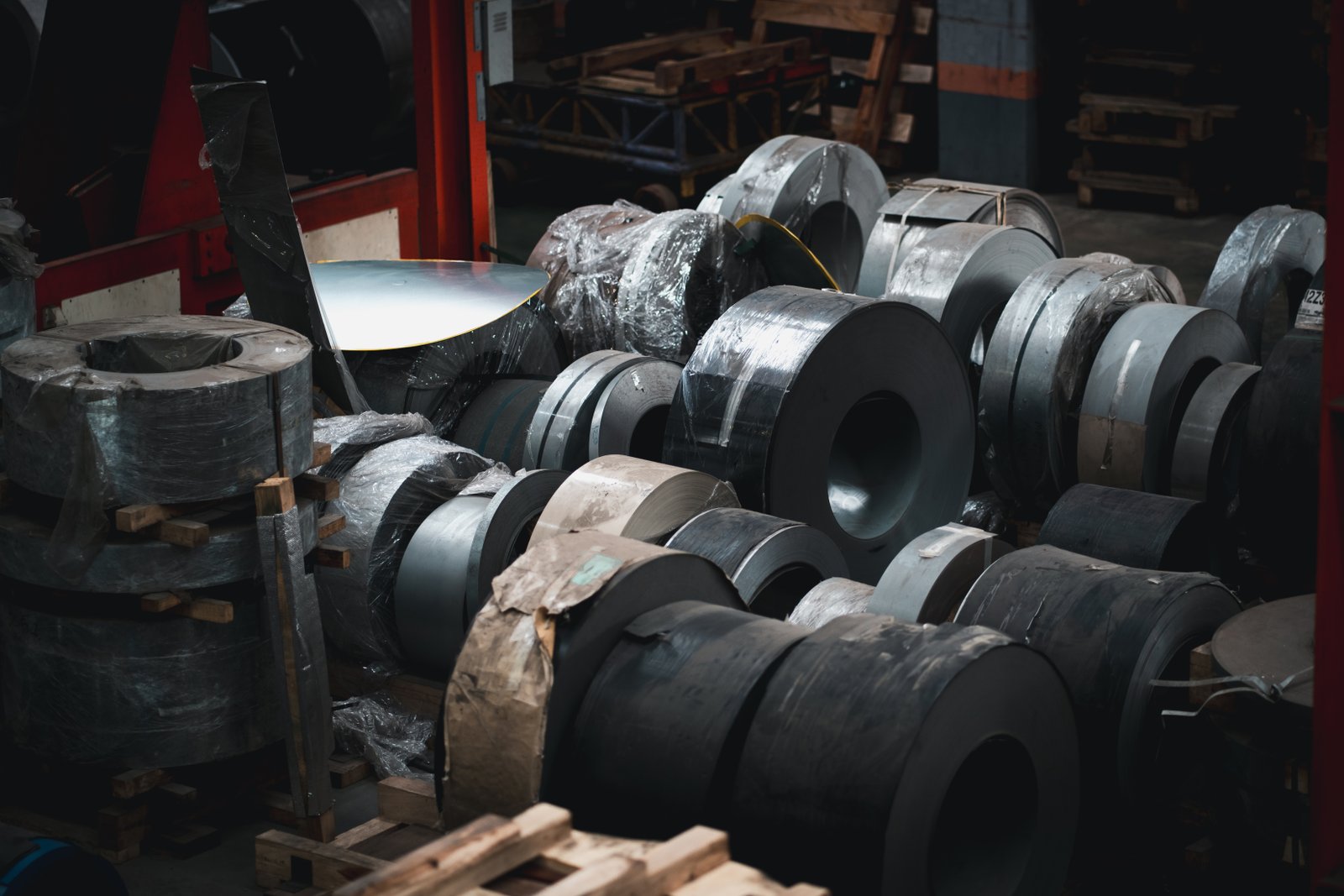
Digital Freight Marketplaces: Lowering the Barrier to EXW
One of the most significant technological shifts has been the emergence of digital freight marketplaces. Platforms like Flexport, Forto, and a host of others focused on the Asian market have transformed how companies procure logistics services. These platforms act as a digital intermediary, connecting importers directly with a vetted network of trucking companies, customs brokers, and ocean carriers. For an importer considering EXW, this is a game-changer. Instead of the daunting task of finding a reliable trucker in a foreign province, an importer can now log into a platform, enter their shipment details (pickup at MFY’s factory, delivery to Port of Shanghai), and receive instant, competitive quotes from multiple providers.
This technology directly attacks the traditional challenges of EXW. The communication barrier is lessened, as the platform provides a standardized interface and often includes translation services or bilingual support. The transparency issue is addressed through upfront pricing and user reviews of logistics providers, similar to how one might choose a hotel or restaurant. Many of these platforms also offer real-time GPS tracking of the truck, so the importer in their home office can see exactly where their stainless steel shipment is on its journey to the port.
While this doesn't eliminate all the risks of EXW—the ultimate liability for export compliance still rests with the buyer—it provides a powerful toolkit for managing them. It empowers a technologically adept small or medium-sized enterprise to achieve a level of logistical control that was previously the exclusive domain of multinational corporations with local offices. It makes EXW a more viable strategic option than ever before, provided the buyer is willing to engage with these digital tools.
Supplier-Side Tech: Enhancing Trust and Transparency in FOB
Technology is not just a tool for the buyer; it is also a powerful asset for the supplier offering FOB services. At MFY, we are integrating digital solutions to make our FOB service more transparent and valuable than ever. The old model of FOB involved the buyer handing over control and then waiting for a "Shipped on Board" notification. Today, we can offer a far more interactive and reassuring experience through dedicated client portals and communication platforms.
Imagine this: you place an FOB order with us for several coils of stainless steel. Through a secure online portal, you can see the real-time status of your order. You receive automated alerts when production is complete, when a truck has been dispatched for port delivery, when your container has successfully passed through customs, and finally, when it has been loaded onto the vessel. We can even attach key documents like the final packing list and photos of the container being loaded directly to the portal for your verification.
This use of technology transforms FOB from a simple service into a trusted, transparent partnership. It removes the "black box" of origin logistics and gives the buyer peace of mind and the visibility they crave, without burdening them with the actual work and risk. It directly counters the main argument for EXW—the desire for control and visibility—by providing those very things as part of a superior FOB package. This tech-enabled transparency is becoming a key differentiator among suppliers.
The Future: Blockchain and AI for Ultimate Supply Chain Integrity
Looking ahead, emerging technologies like blockchain and artificial intelligence are poised to further revolutionize the trade landscape for both Incoterms. The core challenge in global trade is trust and verification. Blockchain technology, with its immutable and distributed ledger, offers a potential solution. A Bill of Lading, a customs declaration, or a certificate of origin recorded on a blockchain cannot be altered, drastically reducing the risk of fraud and documentation disputes that can plague both EXW and FOB shipments. This creates a single source of truth that all parties—seller, buyer, carrier, and customs—can rely on.
| Technology | Impact on EXW Decision | Impact on FOB Decision |
|---|---|---|
| Digital Freight Platforms | Makes managing remote logistics easier and more transparent, increasing the viability of EXW for smaller players. | N/A, as buyer does not manage origin logistics. |
| Real-Time GPS Tracking | Empowers buyer with visibility into the inland transport leg they are managing. | Can be provided by the supplier as part of an enhanced, transparent FOB service. |
| Supplier Client Portals | N/A, as supplier has minimal involvement post-pickup. | Builds immense trust and provides visibility, strengthening the value proposition of FOB. |
| Blockchain for Documentation | Reduces risk of document fraud for which the buyer is liable. | Reduces risk of disputes and provides shared, trusted record between buyer and seller. |
Artificial intelligence (AI) will also play a crucial role in optimization and prediction. AI algorithms can analyze vast datasets to predict port congestion, optimize trucking routes to avoid delays, and even forecast price fluctuations in logistics services. For an EXW buyer, this could provide powerful insights for planning and budgeting. For an FOB supplier like MFY, it allows us to further refine our logistics operations, reduce costs, and provide our clients with even more reliable and competitive services. Ultimately, technology will continue to arm both buyers and sellers with more data and control, making the strategic choice of Incoterm more nuanced and more important than ever.
Digital platforms make EXW more accessibleTrue
Digital freight marketplaces provide importers with visibility and control, reducing traditional barriers to EXW.
Technology makes FOB less transparentFalse
Technology actually enhances FOB transparency through client portals and real-time tracking, making it more valuable.
Conclusion
Ultimately, the choice between EXW and FOB is a critical strategic decision, not just a cost comparison. It requires a careful balance of your internal capabilities, risk tolerance, and the level of control you need, enhanced by the growing transparency that technology provides.
-
Learn the strategic implications of EXW and FOB for your supply chain control and cost ↩
-
Discover potential hidden costs and logistical hurdles of EXW in stainless steel trade ↩
-
Understand how trucking costs vary under EXW and FOB terms, affecting landed costs ↩
-
Discover how FOB agreements simplify logistics and reduce overseas coordination ↩
-
Understand how local offices improve EXW logistics management and reduce risks ↩
-
Check the key components of FOB pricing to avoid hidden costs and risks ↩
Have Questions or Need More Information?
Get in touch with us for personalized assistance and expert advice.
